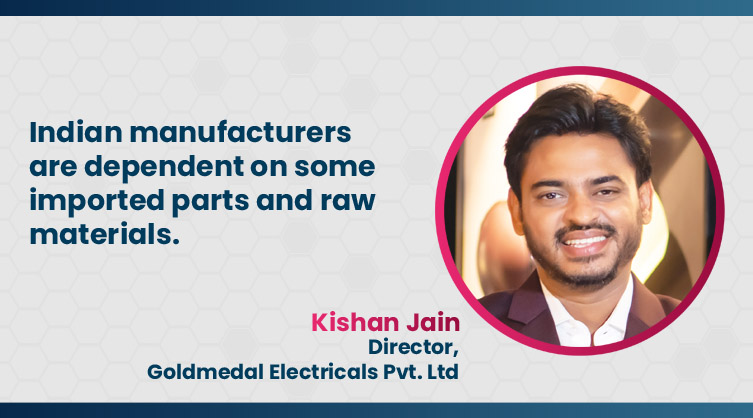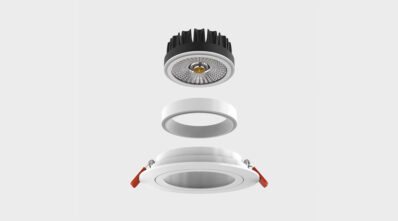Sensors, Wireless and IoT-enabled solutions are in demand
By Admin November 18, 2022 2:23 pm IST
By Admin November 18, 2022 2:23 pm IST

With increasing government initiatives for smart cities, there is an increase in LED business opportunities. Kishan Jain, Director, Goldmedal Electricals Pvt. Ltd., shares changing dynamics in lighting with the introduction of the internet and smart devices in LED lighting.
Can you brief us about your company’s key product profile?
Since its inception, Goldmedal has been developing and manufacturing a wide range of electrical products. We started with wiring devices but today, the company has expanded its portfolio to include various types of switches, home automation systems, LEDs, fans, security systems, entertainment devices, doorbells, wires, cables, DBs, MCBs, and other electrical accessories.
With the increasing emphasis on smart cities, what are the developments in the LED lighting business?
People are growing aware of the long-term benefits of LED and intelligent LED lights. This, along with the government initiatives for smart cities, has created an opportunity for the LED lighting business to overgrow. There is an increased demand for implementing intelligent technologies in the lighting industry. The use of sensors in LEDs, IoT-enabled smart lights and wireless LEDs are some recent developments that have made an impact. We expect a major boom as the internet, and smart devices become easily available and accessible in the upcoming years.
What are the latest trends in the energy-efficient lighting segment?
The pandemic has reshaped the way of life for many people. With people working from home, their electrical needs have doubled, leading to a surge in their electricity bills. We are witnessing a shift in electrical trends with an increased demand for smart and energy-efficient solutions. Consumers want energy-efficient, long-lasting and preferably smart LEDs that also look stylish. This will allow them to limit their energy consumption and lower their carbon footprint without compromising on the aesthetics of their space.

How is the geopolitical situation impacting electrical imports and your business?
Before the pandemic too, we were primarily relying on supplies from Indian manufacturers, although we were also dependent on some imported parts and raw materials. However, with the pandemic affecting the global supply chain, we were able to change our dependencies on these parts and were able to source them through domestic suppliers. This has enabled us to be almost entirely Atmanirbhar, and most of our products are now 100 per cent made in India.
We use cookies to personalize your experience. By continuing to visit this website you agree to our Terms & Conditions, Privacy Policy and Cookie Policy.